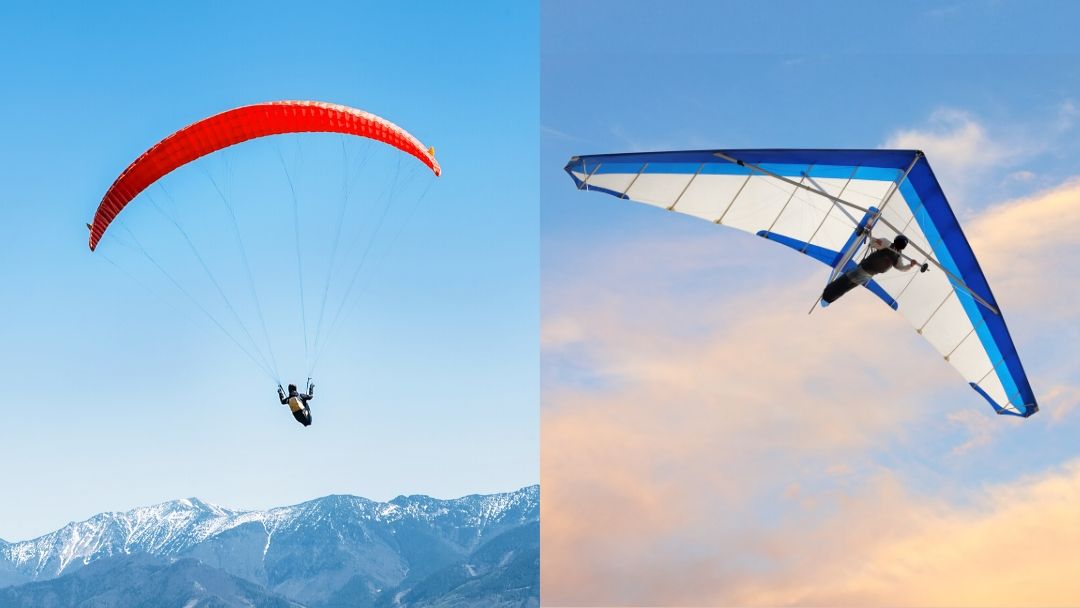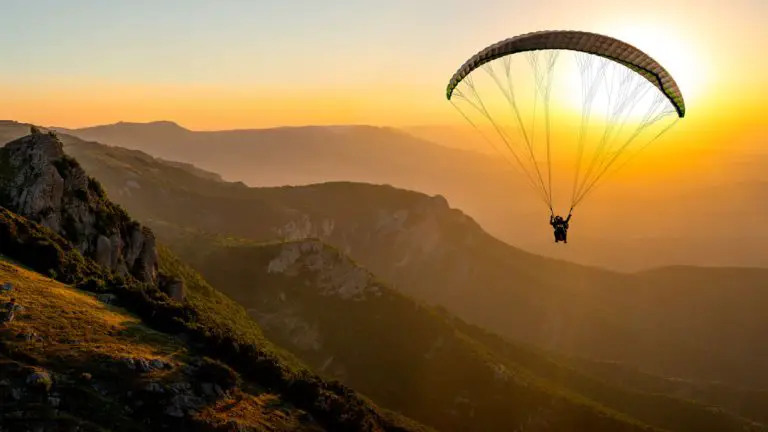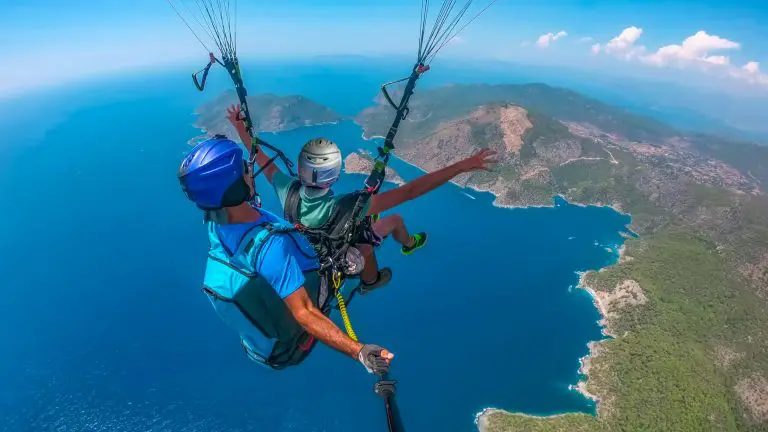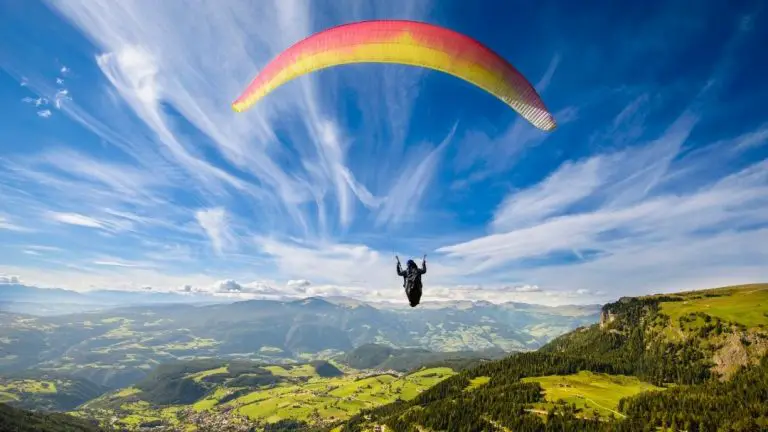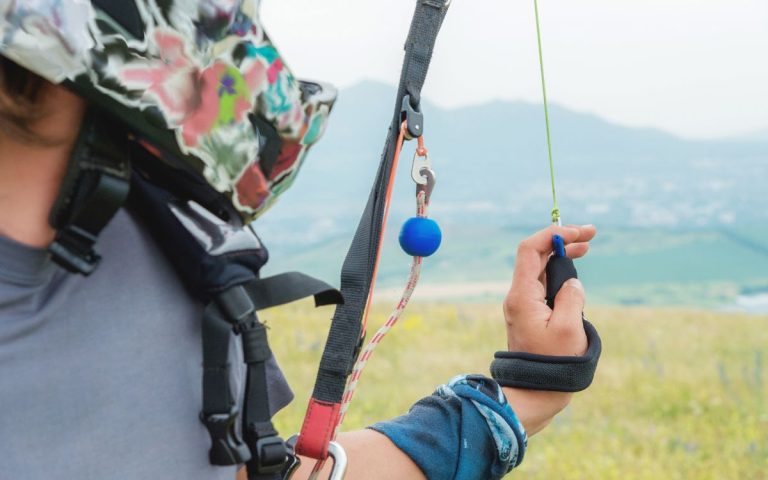Hang gliding vs Paragliding: What’s the score…
The main difference is that a hang glider is a fixed-wing that is controlled by the pilot, as opposed to a paraglider which is a soft canopy that is filled with air to maintain its shape.
So what’s the deal with Paragliding and hang gliding? Aren’t paragliders much more dangerous than a hang glider because it’s not a solid wing?
There is a lot of information behind this question and there are many reasons why someone would choose one over the other.
Here are the main differences and why someone would choose one sport over the other.
Size – Hang Glider vs Paraglider
For a lot of people, the size and weight of the equipment they use are very important. Hang gliders are much larger than paragliders because they use a rigid structure. This structure is usually much heavier for the same capability when compared to a paraglider.
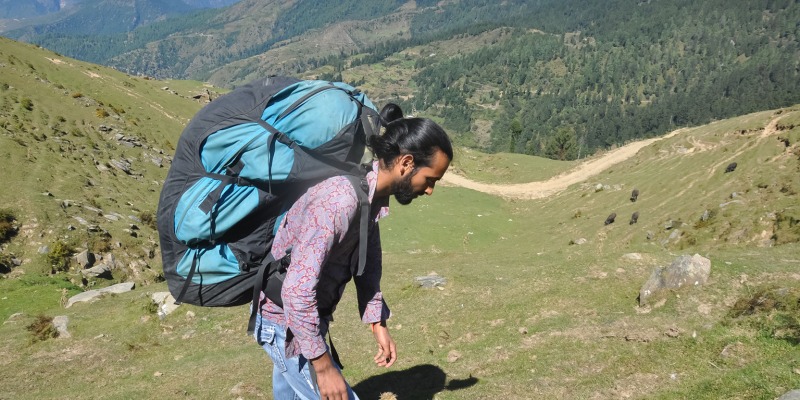
All a paraglider has for structure is a bunch of lines and the fabric of the wing. Paragliders hold their shape through the air pressure of the wind being forced into the leading edge of the wing through a series of holes. This allows them to be much lighter for the same size as the wing.
This is the primary difference that people refer to when going for a paraglider. A paraglider fits into a large backpack when folded so it can easily be moved, stored, and used. They also only weigh around 10-15kg for all the equipment and some can be as low as 5-7kg all up for hiking/mountaineering models.
Hang gliders on the other hand, usually have large boxes or bundles for all the spars, poles, and fabric. They usually pack down to a minimum size of 2m long by 20cm and weigh in at around 20-25kgs. They also go up in weight and size from that, not really something you want to carry up a mountain.
So if you don’t mind having a lot of gear and have the space to store it and move it then hang gliding might be for you.
But if you are like us and want a more compact easy to handle approach then you will be in the Paragliding camp with us.
Paragliders win this first round.
| Sport | Score |
|---|---|
| Paragliders | 1 |
| Hang Gliders | 0 |
Glide Ratio of a Paraglider vs Hang glider
The glide ratio is the ratio of how far a glider will travel over the ground for a given distance than it falls. This is usually shown as a number like 5:1 or 15:1.
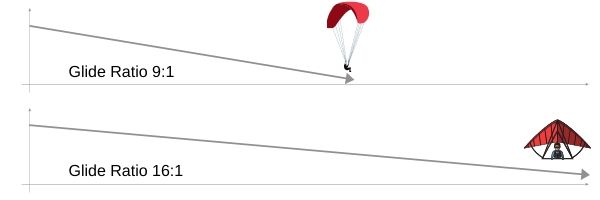
For example, for a glider with a glide ratio of 9:1, for every 1m that the glider descends or loses height, it will move forward by 9m. Here is a diagram to show the principle.
So a glider, whether that be a hang glider, paraglider or even a plane, the one with the best glide ratio will be the most efficient at maintaining its height and be able to fly further.
Ultimately this is the goal of flying a glider it is to stay in the air as long as you can with no propulsion to push you up.
Paragliders have glide ratios from around 9:1 to some of the best being 13:1. This is mainly due to the added drag they have from all the support lines and the canopy not being as tight and rigid.
Hang gliders on the other hand usually have glide ratios around 15:1 or some as high as 20:1 meaning that you get a lot more flight time for the amount of height that you have in the air. This also means you can fly further from the same point, but this can change as we will discuss in maneuverability.
Hang Gliders take the point this round.
| Sport | Score |
|---|---|
| Paragliders | 1 |
| Hang Gliders | 1 |
Speed
This is as simple as it sounds. But it has a couple of effects that make things a bit harder and easier for each kind of glider.
Paragliders have a lower airspeed, around 25km/h to 75km/h, meaning that they can take off much easier at running pace or even lower and with a small headwind you can even take off without moving at all.
This does have some drawbacks though. If the wind is too strong you can’t take off and you might not be able to fly into the wind fast enough to fly upwind.
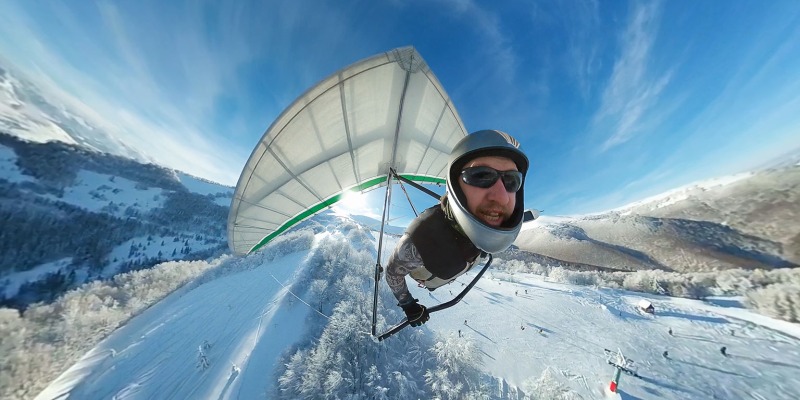
Hang gliders are many asters, in contrast, flying from a start of around 25km/h but this is quite unstable and very close to stalling the wing. Up to top speeds of around 170km/h. meaning that they can deal with more wind more easily.
This does have one major drawback though, take-off and landing space. Because a hang glider needs more speed to fly to need a lot further to take off and much more space to land.
For this round, we will give Hang gliders a point for their overall speed but we will also give Paragliders half a point due to their small space requirements for take-off and landing.
Hang Gliders take the point this round, but Paragliders get a half-point.
| Sport | Score |
|---|---|
| Paragliders | 1.5 |
| Hang Gliders | 2 |
Maneuverability
While this one does depend on the definition of the meaning today we will talk about it in terms of the size of turns. In that sense, Paragliders have this one in the bag. Paragliders can do a complete 180 within 2 wing lengths. For most paragliders that means they can do controlled 360s in about 40m. this is so much smaller than a hang glider and that counts for a lot.
When thermaling, or riding columns of warm rising air, turning radius becomes especially important. This is because a lot of thermals are small columns sometimes 100m across or less. So, the ability to circle within it to keep the lift is very important.
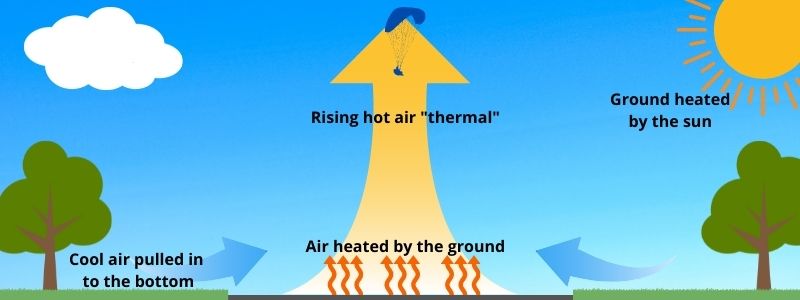
The ability to turn tight and maneuver at slower speeds makes landing much easier and opens up many more locations for landing than are available to hang gliders.
Once you become more advanced with the sport Paragliding has many more opportunities for Acrobatics in the air whereas hang gliding is rather limited here.
For this section, our points go to Paragliding.
| Sport | Score |
|---|---|
| Paragliders | 2.5 |
| Hang Gliders | 2 |
Safety
Nothing beats a wing that is rigid and cannot collapse. This is the main argument behind the safety of hang gliders over paragliders, and it’s a hear one to argue with.
While Paragliders have come a long way the entry-level paragliders have very good inbuilt stability there are still situations that will cause it to collapse.
In contrast, this is almost impossible in a hang glider. Where you may encounter bad turbulence, you will always have a wing above you.
One small benefit of a paraglider is the lower landing speed, meaning that landing is possible almost anywhere. This is only a small difference but it is worth noting because hang gliders do usually need a dedicated landing area due to the larger distance it takes them to stop.
NOTE: All of this being said, the single biggest factor that affects safety is the pilot. If the pilot chooses good conditions to fly, does not take unnecessary risks, and knows how to control their wing well, then they are unlikely to have any issues.
Hang Gliding wins here. But really it’s all about the Pilot…
| Sport | Score |
|---|---|
| Paragliders | 2.5 |
| Hang Gliders | 3 |
Conclusion- So what is the best?
We tried to find an answer to this question we really did, but we never really got there. There are benefits and drawbacks to both Paragliders and hang Gliders.
What we found was that it depends on the pilot. some prefer the extra peace of mind of having a rigid wing and were ok with the compromise in weight and size.
Nevertheless, the popularity of Paragliding has continued to increase due to its ease of transport.

